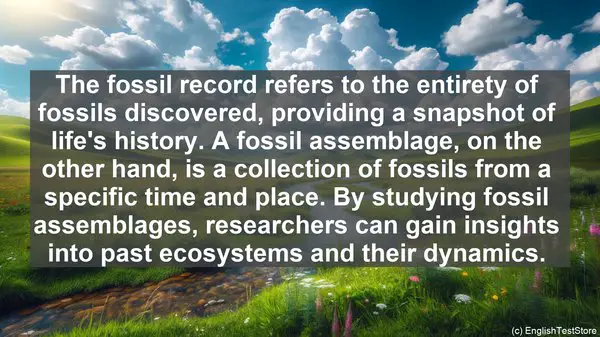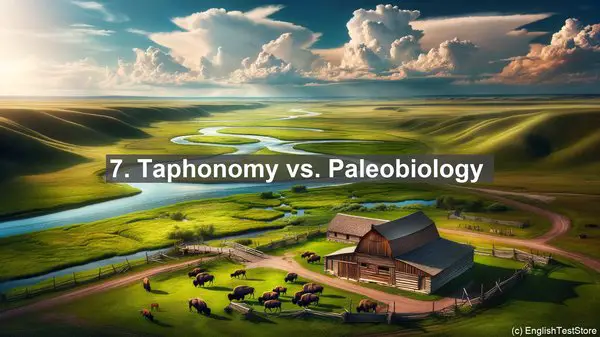Introduction: The Intricacies of Fossil Research
Fossil research is a fascinating field, but it can also be quite intricate. Today, we’ll be discussing the top 10 commonly confused words in this domain. By the end of this lesson, you’ll have a solid grasp on these terms, ensuring your future research is accurate and insightful.
1. Fossil vs. Fossilization
Often used interchangeably, ‘fossil’ and ‘fossilization’ have distinct meanings. A fossil refers to the preserved remains of a once-living organism, while fossilization is the process by which organic material is transformed into a fossil. Understanding this difference is crucial for accurately interpreting the fossil record.

2. Paleontology vs. Archaeology
While both fields involve the study of the past, paleontology focuses on ancient life forms, primarily through fossils. Archaeology, on the other hand, examines human history through artifacts and structures. Though related, these disciplines have different emphases and methodologies.
3. Cast vs. Mold
When a fossil is preserved, it can leave behind either a cast or a mold. A cast is a replica of the organism, formed when minerals fill the space left by the decayed remains. A mold, on the other hand, is the impression left by the organism. Both provide valuable information, but they’re distinct in their composition.
4. Extinct vs. Fossilized
While often associated, ‘extinct’ and ‘fossilized’ aren’t synonymous. Extinct refers to a species that no longer exists, while fossilized indicates the preservation of its remains. It’s possible for a species to be extinct without leaving behind fossils, making the study of fossilized organisms even more valuable.
5. Stratigraphy vs. Chronology
Stratigraphy is the study of rock layers and their arrangement, providing insights into the Earth’s history. Chronology, on the other hand, deals with the sequencing of events. While related, these terms have different scopes, with stratigraphy forming the foundation for establishing chronological sequences.
6. Index Fossil vs. Indicator Species
Both index fossils and indicator species are used in dating and correlating rock layers. However, an index fossil is a species that existed for a relatively short time but had a wide geographic distribution. An indicator species, on the other hand, is used to assess the health of an ecosystem. Understanding their distinctions is vital for accurate interpretations.
7. Taphonomy vs. Paleobiology
Taphonomy and paleobiology are two crucial aspects of fossil research. Taphonomy focuses on the processes that affect an organism after death, including decay and preservation. Paleobiology, on the other hand, examines the biology and ecology of ancient organisms. Together, these fields provide a comprehensive understanding of the fossil record.
8. Trace Fossil vs. Body Fossil
While body fossils are the preserved remains of an organism, trace fossils are indirect evidence of their existence, such as footprints or burrows. Both types of fossils offer unique insights, with trace fossils often providing information about behavior and ecology.

9. Carbonization vs. Petrification
Carbonization and petrification are two common fossilization processes. Carbonization occurs when an organism’s organic material is preserved as a thin carbon film. Petrification, on the other hand, involves the replacement of organic material with minerals. These processes can result in different types of fossils, each with its own significance.
10. Fossil Record vs. Fossil Assemblage
The fossil record refers to the entirety of fossils discovered, providing a snapshot of life’s history. A fossil assemblage, on the other hand, is a collection of fossils from a specific time and place. By studying fossil assemblages, researchers can gain insights into past ecosystems and their dynamics.
